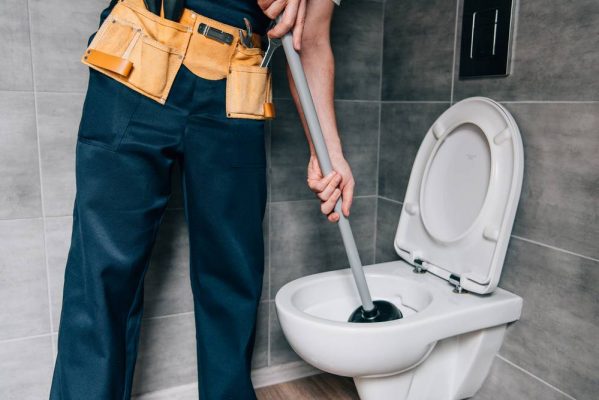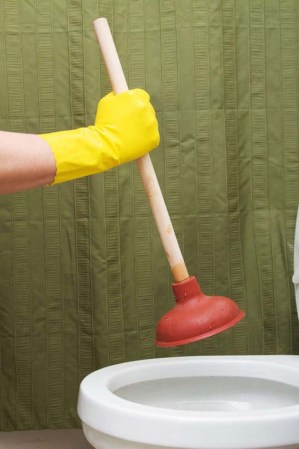Discover Plunger and Drain Cleaner Strategies: Professional Guidance
Discover Plunger and Drain Cleaner Strategies: Professional Guidance
Blog Article
How do you feel about How to Unclog Your Sink with a Plunger?

Introduction
Correct maintenance of family drains is necessary for preventing blockages and ensuring smooth water flow. Among the trick tools in every property owner's toolkit is the bettor, along with numerous drain cleaners developed to deal with persistent blockages effectively. This article explores exactly how to use plungers and drain cleaners efficiently to keep your drains flowing easily.
Section 1: Recognizing Plungers
Kinds of Plungers
There are several kinds of bettors readily available, each developed for various kinds of drains pipes and obstructs. The most common kinds include cup plungers, flange bettors, and accordion plungers.
Just How Plungers Work
Bettors deal with the principle of developing stress and suction to dislodge obstructions. When appropriately applied over a drainpipe, they produce a vacuum cleaner that can pull out particles or break up clogs.
Picking the Right Plunger
Choosing the appropriate plunger relies on the type of drain and the nature of the blockage. Mug plungers are suitable for sinks and tubs, while flange plungers are better fit for commodes as a result of their design.
Common Errors with Bettors
Staying clear of these blunders ensures effective plunging: improper seal around the drain, insufficient force, and not clearing surrounding particles.
Section 2: Making Use Of Plungers Effectively
Preparation
Before diving, guarantee the bettor covers the drain totally and forms a limited seal. Clear any kind of visible particles around the drain opening.
Method
Beginning with gentle diving activities to build suction. Boost stress gradually, making use of a steady rhythm. Repeat as needed until the drain clears.
Troubleshooting Tips
If diving does not function, attempt changing the seal, applying oil jelly for a better seal, or making use of a various type of plunger.
Section 3: Understanding Drainpipe Cleaners
Types of Drain Cleaning Company
Drain cleaners can be chemical or chemical. Chemical cleansers use strong chemicals to dissolve blockages, while chemical cleansers make use of natural enzymes to break down organic matter.
Exactly How Drain Cleansers Job
Chemical cleansers respond with blockages to liquify them, while chemical cleansers break down organic materials like hair and grease without hurting pipes.
Safety Considerations
Always put on handwear covers and eye defense when utilizing chemical drainpipe cleaners. Make certain sufficient air flow and follow maker guidelines thoroughly.
Eco-Friendly Alternatives
Take into consideration using vinegar and baking soft drink or enzyme-based cleaners for green alternatives that are safer for pipes and the atmosphere.
Section 4: Utilizing Drainpipe Cleaners Properly
Application Methods
Put chemical cleaners directly right into the drainpipe opening. Enable them to benefit the recommended time prior to purging with hot water. Enzymatic cleansers need to sit overnight.
Preventative measures
Avoid mixing various sorts of cleansers, as this can produce harmful fumes. Never utilize chemical cleansers along with a bettor, as spilling can happen.
Taking Care Of Persistent Obstructions
For relentless obstructions, take into consideration making use of a pipes serpent or calling an expert plumbing technician to avoid damage to pipes.
Verdict
Finally, recognizing exactly how to use bettors and drainpipe cleansers effectively is vital for preserving healthy and balanced pipes systems. By picking the right devices and techniques, homeowners can tackle minor clogs and avoid major plumbing issues down the line.
5 Steps on How to Use a Plunger Effectively
Creating a Seal: Place the rubber cup of the plunger firmly over the toilet drain hole to create an airtight seal. This seal is crucial to prevent air from escaping and ensure effective plunging.
Plunge Gently: Gently press the plunger down to compress the air inside without causing splashing. This careful action sets the stage for effective unclogging without creating a mess.
Maintaining Pressure: Consistently apply pressure to the plunger while pushing and pulling it up and down. This sustained pressure generates the force needed to dislodge the clog.
Breaking the Clog: Continue plunging until you feel the clog release. Look for the water to start draining, indicating successful removal of the blockage.
Flushing and Cleaning: After clearing the clog, flush the toilet to confirm it's working properly. Clean the plunger with warm, soapy water and disinfect it for future use to maintain hygiene.
Additional Tips on How to Correctly Use a Plunger
if you encounter resistance, add some water to the bowl to create better suction;
check the plunger for any rubber cracks to ensure it's in good condition;
exercise patience and persistence, as certain clogs might need multiple attempts.
Mistakes to Avoid when Using Toilet Plunger
avoid using excessive force, as it may damage the toilet;
don't rush the process; take your time to ensure a proper seal and pressure;
never use a plunger if you've recently used chemical drain cleaners
Conclusion
Mastering the art of how to properly use a plunger is a valuable skill for every homeowner. By employing the correct techniques, you can effectively address clogs and ensure your toilet functions smoothly. Patience, persistence, and proactive in maintaining your plunger's hygiene are key to success in this endeavor.
Armed with these skills and principles, you can confidently handle plumbing issues as they arise, promoting a well-functioning and hygienic home environment.
https://homealliance.com/blogs/how-to-effectively-use-a-plunger-the-ultimate-guide

Application Methods
Put chemical cleaners directly right into the drainpipe opening. Enable them to benefit the recommended time prior to purging with hot water. Enzymatic cleansers need to sit overnight.
Preventative measures
Avoid mixing various sorts of cleansers, as this can produce harmful fumes. Never utilize chemical cleansers along with a bettor, as spilling can happen.
Taking Care Of Persistent Obstructions
For relentless obstructions, take into consideration making use of a pipes serpent or calling an expert plumbing technician to avoid damage to pipes.
Verdict
Finally, recognizing exactly how to use bettors and drainpipe cleansers effectively is vital for preserving healthy and balanced pipes systems. By picking the right devices and techniques, homeowners can tackle minor clogs and avoid major plumbing issues down the line.
5 Steps on How to Use a Plunger Effectively
Creating a Seal: Place the rubber cup of the plunger firmly over the toilet drain hole to create an airtight seal. This seal is crucial to prevent air from escaping and ensure effective plunging. Plunge Gently: Gently press the plunger down to compress the air inside without causing splashing. This careful action sets the stage for effective unclogging without creating a mess. Maintaining Pressure: Consistently apply pressure to the plunger while pushing and pulling it up and down. This sustained pressure generates the force needed to dislodge the clog. Breaking the Clog: Continue plunging until you feel the clog release. Look for the water to start draining, indicating successful removal of the blockage. Flushing and Cleaning: After clearing the clog, flush the toilet to confirm it's working properly. Clean the plunger with warm, soapy water and disinfect it for future use to maintain hygiene. Additional Tips on How to Correctly Use a Plunger
if you encounter resistance, add some water to the bowl to create better suction; check the plunger for any rubber cracks to ensure it's in good condition; exercise patience and persistence, as certain clogs might need multiple attempts. Mistakes to Avoid when Using Toilet Plunger
avoid using excessive force, as it may damage the toilet; don't rush the process; take your time to ensure a proper seal and pressure; never use a plunger if you've recently used chemical drain cleaners Conclusion
Mastering the art of how to properly use a plunger is a valuable skill for every homeowner. By employing the correct techniques, you can effectively address clogs and ensure your toilet functions smoothly. Patience, persistence, and proactive in maintaining your plunger's hygiene are key to success in this endeavor.
Armed with these skills and principles, you can confidently handle plumbing issues as they arise, promoting a well-functioning and hygienic home environment.
https://homealliance.com/blogs/how-to-effectively-use-a-plunger-the-ultimate-guide

I was made aware of that editorial on Here's How to Correctly Use a Toilet Plunger through a buddy on our other web page. Sharing is caring. You won't know, you may be helping someone out. We cherish reading our article about Here's How to Correctly Use a Toilet Plunger.
Request An Appointment Report this page